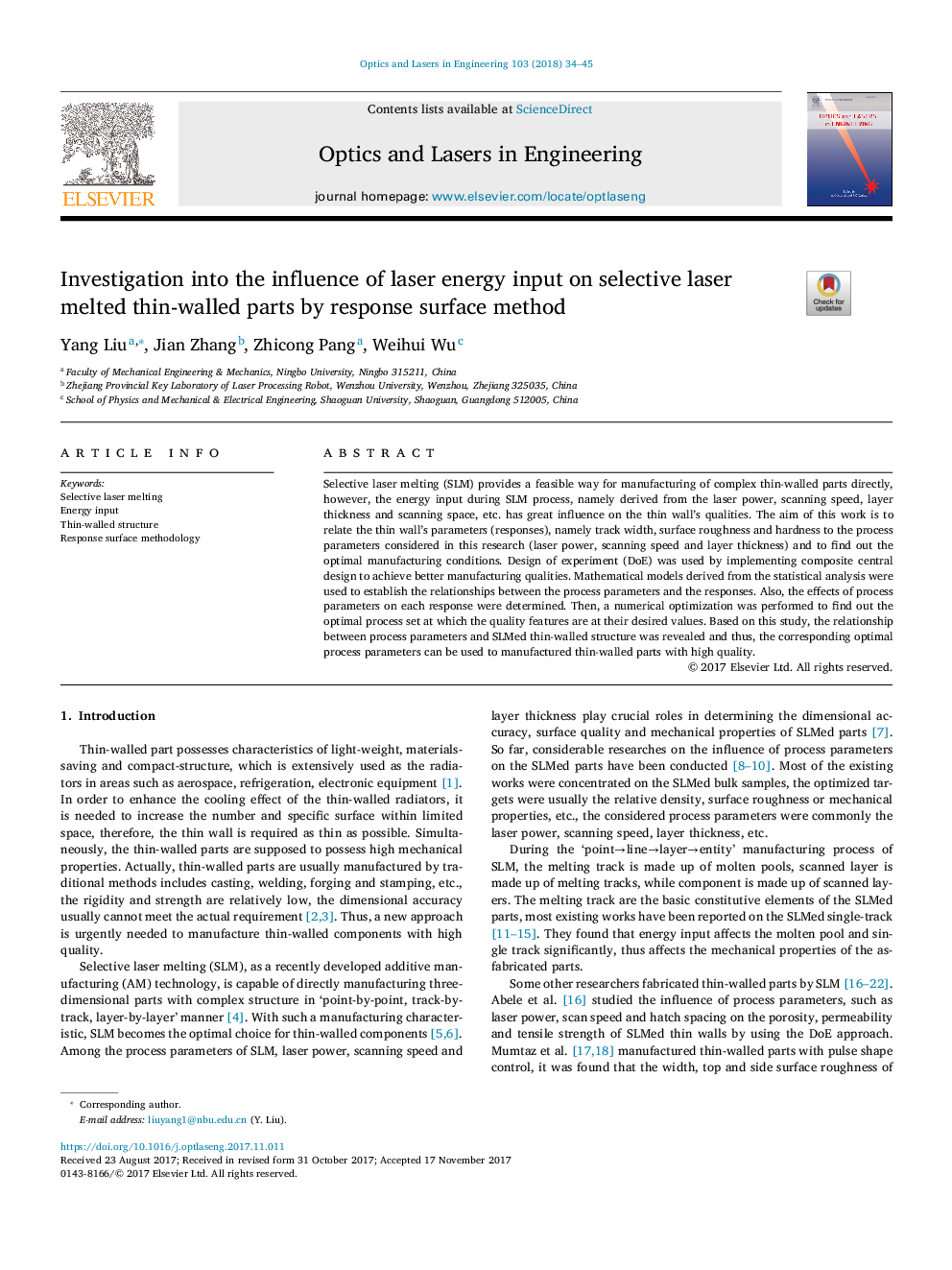| Article ID | Journal | Published Year | Pages | File Type |
|---|---|---|---|---|
| 7131877 | Optics and Lasers in Engineering | 2018 | 12 Pages |
Abstract
Selective laser melting (SLM) provides a feasible way for manufacturing of complex thin-walled parts directly, however, the energy input during SLM process, namely derived from the laser power, scanning speed, layer thickness and scanning space, etc. has great influence on the thin wall's qualities. The aim of this work is to relate the thin wall's parameters (responses), namely track width, surface roughness and hardness to the process parameters considered in this research (laser power, scanning speed and layer thickness) and to find out the optimal manufacturing conditions. Design of experiment (DoE) was used by implementing composite central design to achieve better manufacturing qualities. Mathematical models derived from the statistical analysis were used to establish the relationships between the process parameters and the responses. Also, the effects of process parameters on each response were determined. Then, a numerical optimization was performed to find out the optimal process set at which the quality features are at their desired values. Based on this study, the relationship between process parameters and SLMed thin-walled structure was revealed and thus, the corresponding optimal process parameters can be used to manufactured thin-walled parts with high quality.
Related Topics
Physical Sciences and Engineering
Engineering
Electrical and Electronic Engineering
Authors
Yang Liu, Jian Zhang, Zhicong Pang, Weihui Wu,
